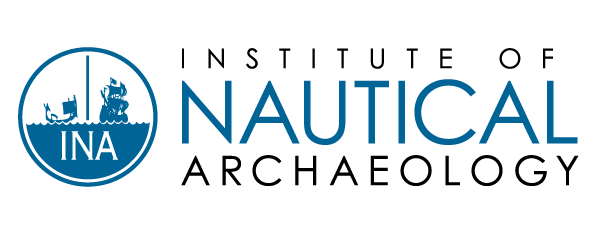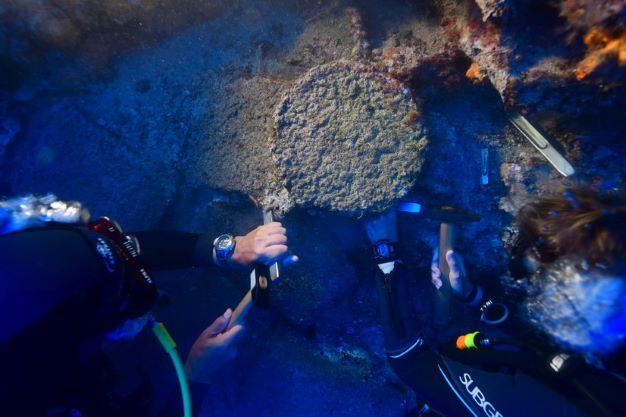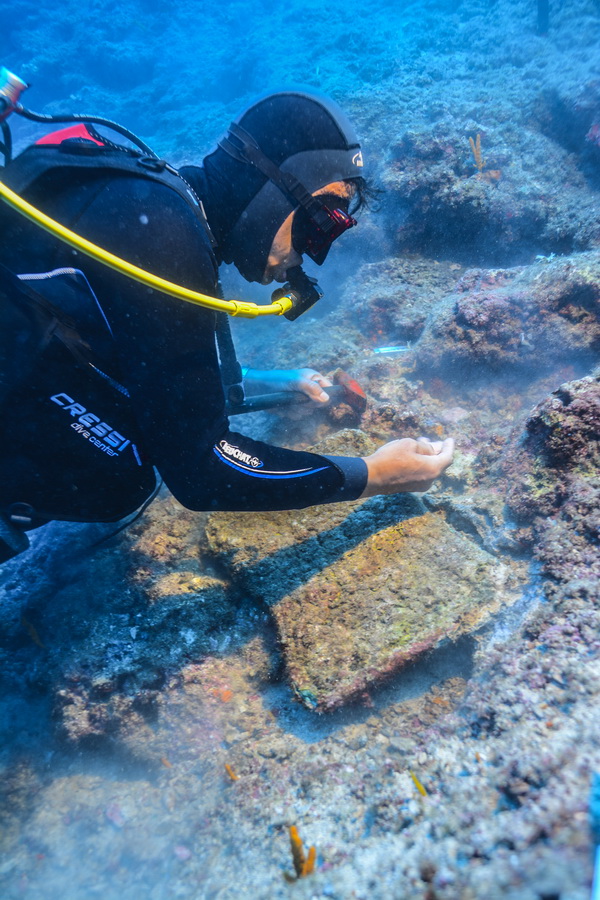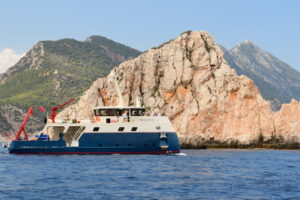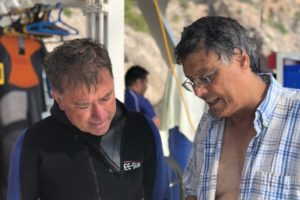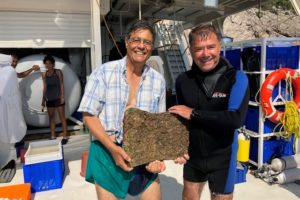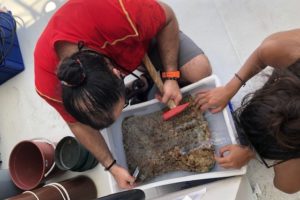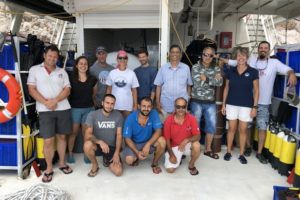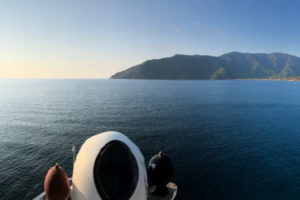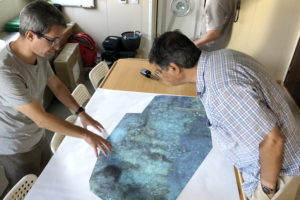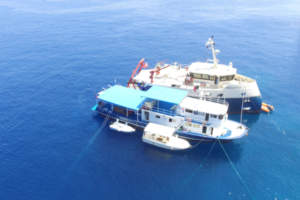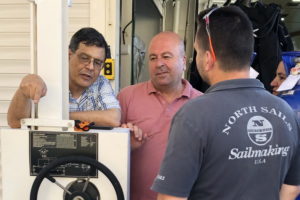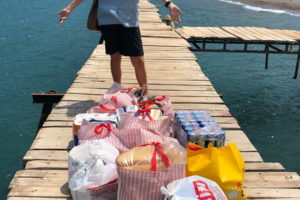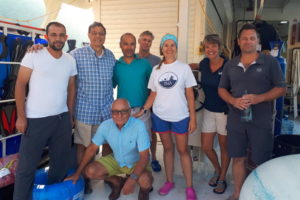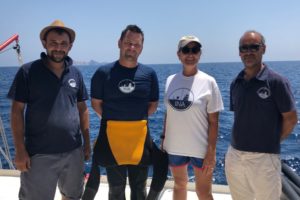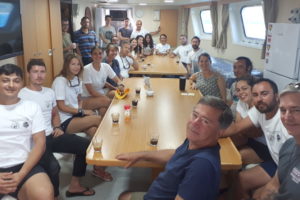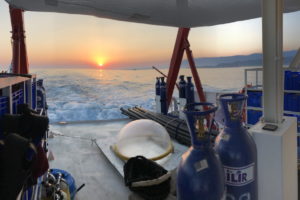MEDITERRANEAN
INA archaeologists were part of this project in 2019 and 2022, but INA has since terminated involvement in the Kumluca excavation and is allocating its staff and resources to other projects.
During the summer of 2019, a small team of INA archaeologists directed by INA Vice President Cemal Pulak, Professor and Coordinator of the Nautical Archaeology Program at Texas A&M University, in partnership with Hakan Öniz, Associate Professor in the Division of Mediterranean Underwater Cultural Heritage at Akdeniz University, and under the auspices of the Antalya Museum, initiated the excavation of a Bronze Age shipwreck.
In late June, the INA team departed Bodrum aboard INA’s Archaeological Research Vessel Virazon II and reached the site after 20 pleasant hours of sailing. Over the next two weeks, the team established four moorings so that Virazon II could be positioned directly over the wreck, which lies on a steep rocky slope at a depth of 37-52 m (145 ft). They also set up the trapeze for oxygen decompression, deployed all on-site safety and excavation equipment, installed and measured in ten datum stakes for mapping the wreck, and then began acclimation, mapping, and working excavation dives.
Among the ~100 ingots visible on the seabed, the team quickly discovered that many of them were encrusted together or concreted to the rock below. Careful chiseling was required during each of the 20-minute dives, and over the course of the remaining three weeks, the team freed and raised five ingots. These included (a) pillow-shaped oxhide ingots (stylistically earlier than those ‘eared’ oxhide ingots on the 14th-century B.C. Uluburun shipwreck), and (b) round plano-convex ‘bun’ ingots; there was more variety among the ingot cargo than just these two types. The excavation of this cargo presented an unparalleled opportunity to learn about the methodological and metallurgical origins of these earliest ingots.
Throughout the summer of 2019, Virazon II performed flawlessly and greatly enhanced the safety, efficiency, and comfort of all those on board. Two cooks prepared meals in the Virazon II galley for up to 40 people eating on two ships (Virazon II and Arkeo); the five-ton A-frame was used to lower various pieces of safety equipment to the seabed, and the spacious stern made it easy to monitor small boat traffic and the twice-daily diving operations of up to 20 people.
At the invitation of Hakan Öniz, the team was joined by three deepwater Trimix (nitrogen-oxygen-helium) divers from Sinop University. They brought with them enough mixed gas for one dive, but owing to the presence of a Nitrox (nitrogen-oxygen) blender aboard Virazon II, they were able to mix their own gas and complete at least one deep (90 m) dive to look for any archaeological evidence that the wreck spilled over the ledge on which it sits; none was found.
2022
After a Covid-induced two-year hiatus, the Kumluca excavation resumed in 2022, from mid-June to mid-August. Again, the INA team aboard Virazon II was joined by Hakan Öniz and university students aboard Arkeo. Cemal Pulak directed the archaeological and diving operations, while John Littlefield oversaw diving safety and gear maintenance.
Despite heavy concretion fusing objects to the seabed and to each other, the team managed to raise 19 copper oxhide/pillow ingots of varying size and ten bun/disk-shaped ingots. Visible secondary marks made with chisels were noted on five ingots, although more may be revealed after cleaning the ingots of their encrustations. In addition, two disk-shaped lead balance weights, several ceramic fragments, and some ballast pebbles were raised. The ingots were initially taken for registration to the Antalya Museum under the auspices of the Turkish Ministry of Culture and Tourism. Ten of these were later delivered to INA’s Bodrum Research Center in January for conservation and study.
Numerous site photo mapping runs were completed by José Casabán. The results, along with other photos and direct observation, enabled Patricia Sibella to also draft a site plan. Assisted by various members of the team, she also measured and entered the ingots field registry notebook. Orkan and Dilan Köyagasıoğlu handled artifact photography on the stern of the Virazon, with John Littlefield filling in.
INA extends our deep appreciation to the INA and TINA directors who helped make this project possible, and to all members of the 2019 Kumluca Excavation team, especially Mustafa Demirel, Director of the Antalya Museum, under whose authority the 2019 project was permitted by the Turkish Ministry of Culture and Tourism.
